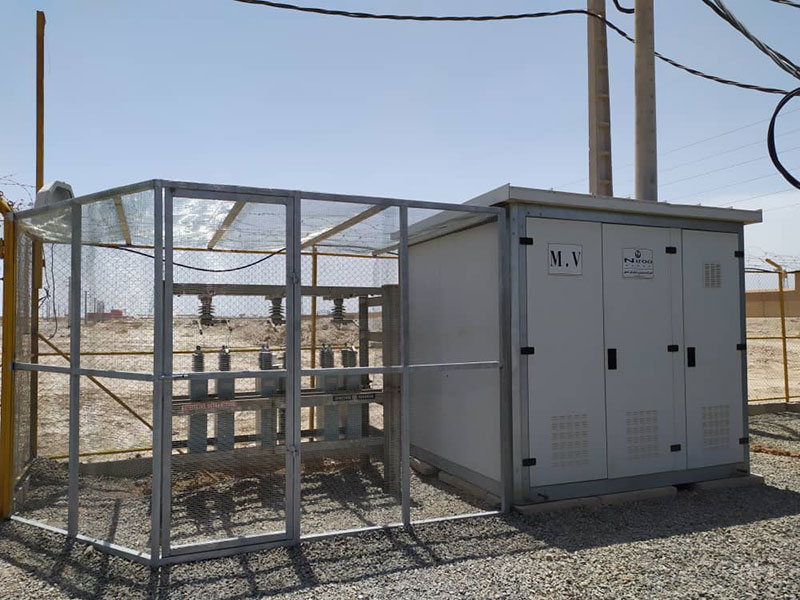Structures of High Voltage Substations
The power substation performs the work of strengthening/reducing/distributing electricity to power lines and masts.
Amplification of electricity corrects any drop, fluctuation or any interference in its electricity. Power reduction is like what the adapter does for the phone, and charges the phone with weakened power. Electricity distribution by changing the voltage, transfers it from the power station to the consumers with the required voltages.
Gantry
Gantry structures are used in power transmission substations, which are similar to power transmission towers in terms of design, materials, and production methods.
A gantry is a gate-shaped metal structure that is used for the electrical connection of various equipment, especially the line-to-post connection.
In gantry structures (bridge + column), the cable is transferred from the line to the substation structures and equipment.


- Capacitor bank structure
The capacitor bank helps the power grid, and while the power grid provides us with active power, the capacitor bank provides us with reactive power, and this makes the power grid not have to provide reactive power, and only provide us with active power.
The capacitor bank has different components according to its type and application, which include: switchboard, three-phase capacitor, capacitor bank regulator, capacitor contactor, input switch, fuse switch, harmonic filter, busbar, rotary switch, etc.
- Equipment base
Power transmission and distribution equipment refers to all the equipment used in electricity substations for power transmission and distribution, for example: (Post Insulators- PI), (CT) current transformer, Lightning Arresters (LA), DS Lightning / Surge Arrester, Sectioner DSE, DSR, DSL and so on, except for the power transmission and distribution equipment, which will be different depending on the equipment and type of the substation.


- Control building structures
The number of metal parts is large and the ratio of resistance to weight is greater than concrete materials, for this reason it is very important in the large openings of sheds and high-rise buildings, buildings that are placed on loose ground. Steel has very high durability, metal buildings that are carefully maintained will be usable for a long time. Metal is prepared in large factories under strict supervision, the uniformity of its properties can be ensured, and unlike concrete, its properties are not affected by external factors, ensuring the uniformity of material properties is effective in choosing a small confidence factor, which itself leads to savings in the consumption of materials.
